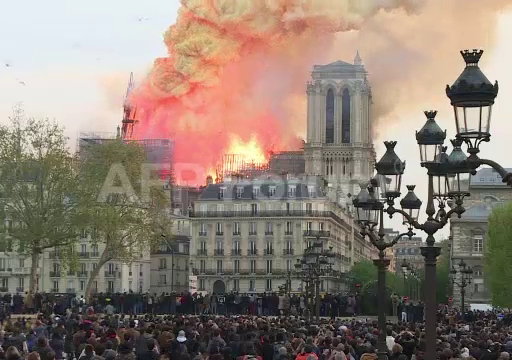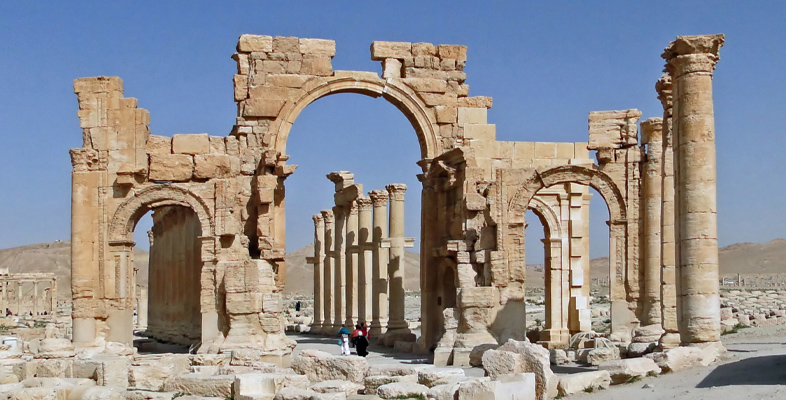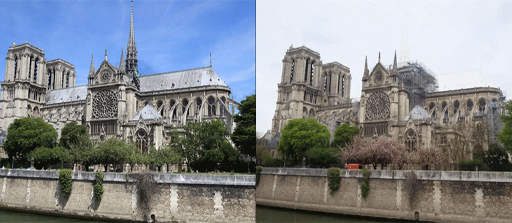1.2 The day after the fire
This video shows the fire and its immediate aftermath.

An assessment of the damage caused by the fire began the next day. Along with losing the central spire, most of the roof had been destroyed.
Activity 1 Reflecting on personally valued heritage
Think about Notre-Dame, or another historical building, or a piece of heritage in your hometown which is important to you. Then try to answer the following questions.
- Why do you consider the heritage to be important?
- How would you feel to see it being destroyed?
- What would you want to happen to the site afterwards? Would you want the heritage rebuilt?
Discussion
For many individuals the built environment can be incredibly significant. In Paris, groups of people stood vigil all night over Notre-Dame as the fires were put out, singing and praying, and the news of its destruction was reported all over the world. Buildings such as these can be meaningful to people for cultural, religious or personal reasons and, when they are damaged, it can provoke feelings of intense grief. Some people even describe the destruction of a treasured place as being like the death of a loved one.
And yet you might not see the loss of buildings such as Notre-Dame as quite as serious as the deaths of human beings. One reason for thinking so, among others, is that buildings can be rebuilt. As you will see in the next section, the prospect of rebuilding is an attractive proposal for many people, even when it comes at a great cost.

